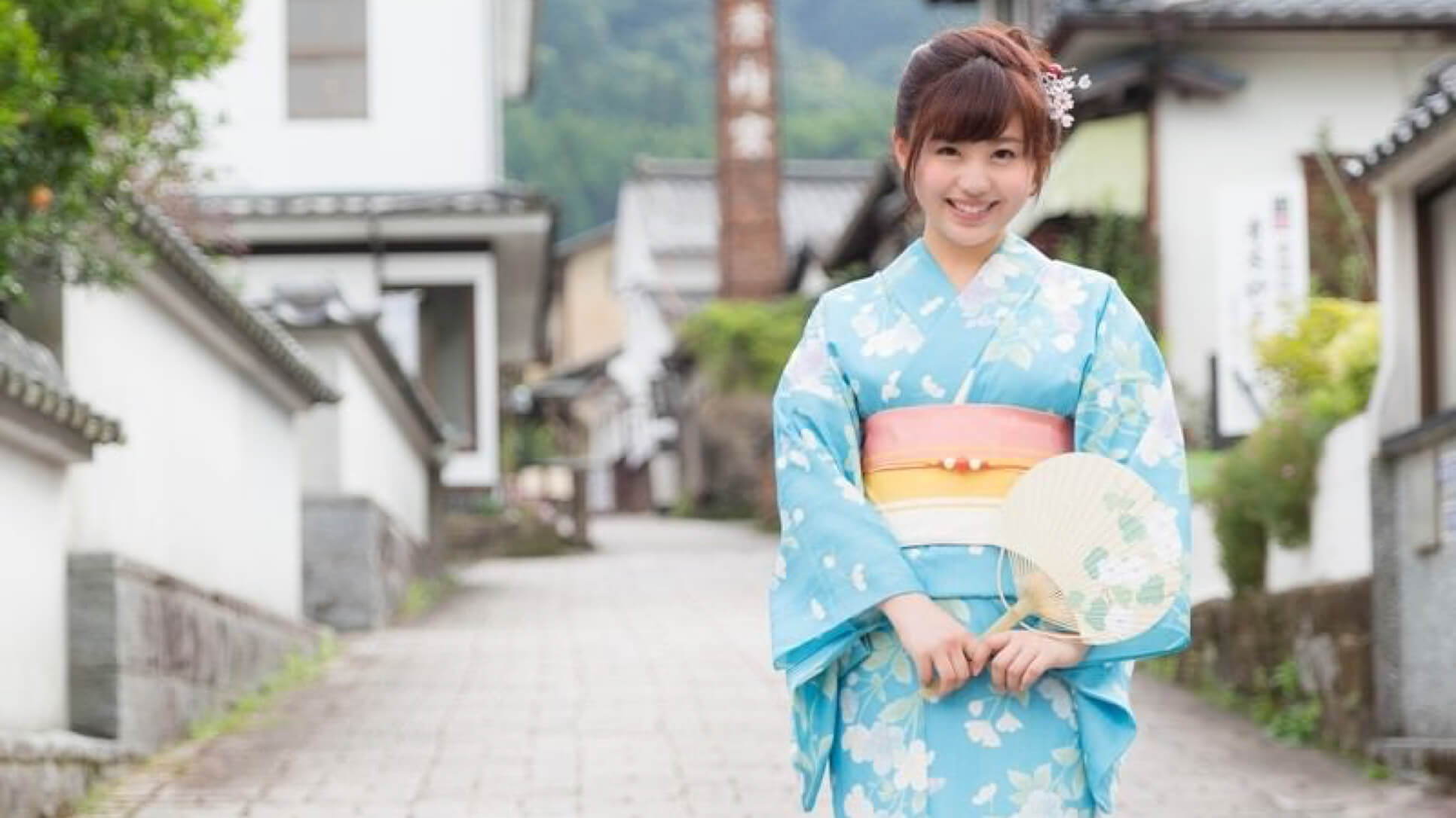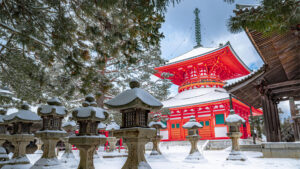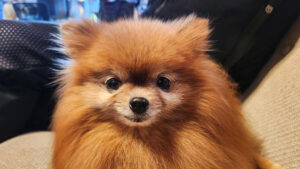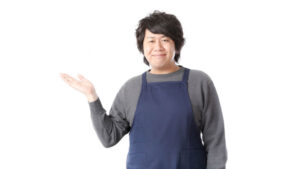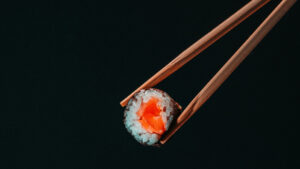When traveling to Japan in the summer, strolling through the city in a yukata is a must-have experience. Especially in Tokyo, popular sightseeing areas like Asakusa and Harajuku offer convenient rental services that allow you to enjoy wearing a yukata with ease.
However, many first-time visitors may feel unsure and ask questions like: “What’s the difference between a yukata and a kimono?”, “What do I need to prepare?”, or “Are there any etiquette rules I should follow?”
This article will provide a complete beginner’s guide to enjoying yukata — covering everything from basic knowledge and how to wear one, to what to bring, proper manners, and how to handle unexpected issues. With this guide, you can feel confident and fully enjoy the yukata experience in Japan.
Contents
What is a Yukata? Learn the Basics
A yukata is a traditional Japanese garment that adds color and charm to summer in Japan. Originally derived from the “yukatabira,” a robe worn after bathing, the yukata is now commonly worn at summer festivals, fireworks displays, and while relaxing at ryokan inns. In recent years, it has gained popularity among international tourists, and rental services are widely available in tourist areas like Tokyo and Kyoto. In this section, we’ll introduce the basics of what a yukata is, focusing on how it differs from a kimono.
Differences Between Yukata and Kimono
Although yukata and kimono may look similar at first glance, there are several important differences. Let’s explore those differences in terms of usage, materials, and accessories.
Occasions and Seasonal Use
The main difference lies in when and where each garment is worn. Yukata are casual garments worn exclusively in the summer, typically at events like festivals, fireworks shows, or during stays at hot spring inns. They’re also seen as indoor loungewear for relaxation.
Kimonos, on the other hand, are worn throughout the year and serve both formal and casual purposes. They are worn for special occasions such as weddings, coming-of-age ceremonies, and tea ceremonies, and come with many rules depending on the occasion.
Material and Comfort
Yukata are usually made from cotton or polyester—lightweight, breathable fabrics designed for comfort in hot weather. They’re easy to wash and ideal for beginners.
Kimono are made from a variety of materials like silk, wool, or polyester, and are tailored according to season. Formal kimono are often delicate and require professional cleaning.
Belts and Accessories
Yukata use simpler belts like hanhaba obi or soft heko obi, which are easy to tie into cute ribbon-style knots. The set usually includes only the essentials: a waist cord, wooden sandals (geta), and a drawstring purse (kinchaku).
Kimono require more formal and structured belts, such as Nagoya obi or fukuro obi, and the tying methods are more complex. Additional accessories include juban (undergarment), tabi (socks), zori (sandals), obiage (sash), and obijime (cord), making the full outfit more elaborate.
The History and Modern Enjoyment of Yukata
Yukata has a long history in Japanese daily life and culture. Although its use and style have evolved over time, it continues to be loved by people today and is now recognized as a symbol of summer in Japan. This section introduces the historical background of yukata and how it is enjoyed in modern times.
Originally a Post-Bath Garment
The origins of yukata date back to the Heian period (794–1185). Aristocrats of that era wore a robe called yukatabira when entering steam baths. Made from thin linen or hemp fabric, this garment served the practical purpose of wiping off sweat and preventing chills after bathing.
During the Edo period (1603–1868), yukata became popular among the general public and were used as post-bath robes or sleepwear at home. It was during this time that techniques like indigo dyeing and shibori (tie-dye) advanced, leading to a wide variety of yukata patterns and designs.
Popular at Summer Festivals and Events
Today, yukata has evolved from a purely practical garment into a fashionable outfit. Especially in the summer months, it’s common to see people wearing yukata at fireworks displays, Bon Odori festivals, and other seasonal events. The light and colorful yukata enhances the summery atmosphere and reflects a distinctly Japanese sense of season.
In recent years, more people are choosing to wear yukata for casual outings and dates. Trendy options featuring lace, modern patterns, and soft, muted colors have also become popular. Thanks to the rise of rental services, enjoying yukata has become more accessible and convenient.
Popular Among International Tourists
As global interest in Japanese culture grows, yukata has become a must-try experience for international visitors. Tourist areas like Tokyo, Kyoto, and Osaka are home to many rental shops offering yukata experiences. These shops often provide guided “wearing and walking” tours, allowing tourists to explore historical towns while dressed in traditional attire.
Places like Asakusa, Kamakura, and Kanazawa are especially popular for yukata experiences due to their traditional streetscapes. This trend is also fueled by social media, with many people sharing their yukata photos on Instagram and other platforms. Many rental shops now offer English-speaking services, making it easy and enjoyable for travelers to join in.
Yukata Is for Everyone – A Simple Start for Beginners
Many people may hesitate to try wearing a yukata, thinking it’s difficult to put on or worrying about cultural etiquette. But in reality, yukata is one of the most accessible forms of traditional Japanese clothing. Thanks to convenient rental services and beginner-friendly options, even first-timers can enjoy wearing one with ease and confidence.
Hands-Free Convenience with Rental Services
Gathering all the necessary items to wear a yukata might seem overwhelming, but rental shops make it incredibly simple. Full sets—yukata, obi (belt), geta (sandals), kinchaku (drawstring bag), and hair accessories—are usually available. You just need to walk in with empty hands.
Most rental plans include professional dressing (kitsuke) and even hairstyling, allowing you to enjoy a polished and elegant look with minimal effort. This ease of use is especially popular among travelers and event-goers who want to quickly transform into traditional attire.
Easy Obi Tying Options Available
Worried about tying the obi? Don’t be. In recent years, beginner-friendly pre-tied obi (with Velcro fasteners) and one-touch obi belts have become widely used. Even if you want to dress yourself, many simple styles can be learned quickly through video tutorials or tips from rental shop staff.
For women, cute styles like bow-shaped or ribbon-tied obi are especially popular and photogenic.
Perfect for Instagram-Worthy Photos
Yukata is an incredibly photogenic garment. Its vibrant patterns and refreshing colors create a beautiful contrast with summer scenery and traditional architecture. In fact, many young people now rent yukata just to take photos for social media.
Popular photo spots like Kaminarimon in Asakusa, Gion in Kyoto, and Komachi Street in Kamakura are a great match for yukata. Choose your favorite design and capture a one-of-a-kind moment to remember.
Preparation and Essentials Before Wearing a Yukata
Wearing a yukata comfortably starts with the right preparation. If you gather all the necessary items in advance, you can dress smoothly on the day and reduce the risk of your outfit becoming loose. Here, we’ll introduce the must-have items and innerwear to prepare, even for first-timers.
Checklist of Basic Yukata Items
Yukata, Obi, Geta Sandals, and Kinchaku Bag
- Yukata: Typically made of breathable cotton or cotton-linen blend—ideal for summer wear.
- Obi (belt): Most commonly a hanhaba-obi (half-width sash); different tying styles create various impressions.
- Geta: Traditional Japanese wooden sandals with colorful thongs that complement your yukata style.
- Kinchaku bag: Perfect for carrying essentials like your phone or wallet. Choose a design that matches your yukata for a cohesive look.
These items are often included in rental plans, making it easy to enjoy a yukata experience without bringing anything.
Adjustment Accessories: Koshi-himo and Date-jime
To wear a yukata beautifully, body-fitting accessories are helpful:
- Koshi-himo: Thin cloth belts used to hold the yukata in place. Having two or three is useful.
- Date-jime: A wider sash used over the yukata to keep the obi neat and prevent it from slipping.
- Towels or gauze: Used for body shaping to smooth out curves and stabilize the obi.
With these tools, you can enjoy a more beautiful and comfortable fit.
Choosing the Right Undergarments
Wearing proper innerwear enhances both comfort and cleanliness:
- Wafuku undergarments: Special Japanese-style underwear that prevents see-through and absorbs sweat. Available in one-piece or two-piece sets.
- Tank tops and leggings: Casual Western-style options can also work if you’re going for a relaxed look.
- Choose summer fabrics: Select moisture-wicking, quick-drying materials for added comfort.
Proper innerwear preparation ensures a cool and hygienic yukata experience.
Renting vs Buying
There are two ways to enjoy wearing a yukata: renting or buying. Each option has its own advantages, and the best choice varies depending on whether you’re a beginner or a repeat wearer.
Best for Beginners: Renting a Yukata
For first-time wearers, renting is an easy and cost-effective choice.
- Yukata, obi, geta sandals, accessories, and dressing service are usually included in a set, so you can come empty-handed.
- Rental shops offer the latest seasonal and trendy designs.
- No need to worry about washing or storage at home.
- Ideal for those who only want to wear it for special events or want to try different patterns to see what suits them.
Benefits of Owning Your Own Yukata
Owning a yukata lets you enjoy it in new ways each time you wear it.
- More economical in the long run for frequent wearers.
- You can choose a design, size, and color that fits your body and preferences.
- Good opportunity to practice dressing yourself or enjoy wearing traditional clothing at home.
- Recommended for those interested in Japanese culture or who attend yukata events every year.
Tips for Buying a Yukata and Budget
If you’re thinking about buying, keep these points in mind to avoid disappointment:
- Material: 100% cotton is soft and popular among beginners. Cotton-linen blends are more breathable and suited for advanced users.
- Size: Choose a length that fits your height and waist properly.
- Pattern and Color: Select one that matches your skin tone and overall vibe for a more attractive look.
- Price Range: Yukata sets (including yukata, obi, and geta) typically range from ¥5,000 to ¥15,000.
Online shops and outlet sales offering full sets make it easier and more affordable for beginners to make a purchase.
Things to Do Before Wearing a Yukata
Proper preparation is essential to wear a yukata smoothly and beautifully. Here are some key points to keep in mind.
Set Your Hairstyle First
If you do your hair after putting on the yukata, you might mess up the collar or the obi. So it’s best to style your hair first.
- Wearing your hair up highlights the nape of your neck, which enhances the traditional look.
- Use traditional hair accessories or kanzashi to add a Japanese touch.
- Use hair spray to keep your style in place throughout the day.
Prepare Your Essentials in a Bag
Yukatas don’t have pockets, so you’ll need to carry your belongings in a small bag.
- Pack a handkerchief, tissues, smartphone, and coin purse in a compact drawstring bag.
- In the hot summer, sweat wipes or a small towel can be very helpful.
- If you’re going out after dark, bring a mobile light or small flashlight for safety.
Wear It in the Cooler Hours of the Day
Wearing a yukata during the peak heat of the day can be tough. It’s more comfortable to wear it in the evening when the temperature drops.
- Events like summer festivals and fireworks usually take place in the evening—perfect timing for a yukata.
- If you’re wearing it during the day, bring a parasol or fan to avoid heatstroke.
- For indoor events, air conditioning makes it more pleasant to wear a yukata.
Steps for Putting On a Yukata
Although a yukata looks simple, wearing it beautifully requires a few tricks. By following these steps, even beginners can dress nicely.
Putting on and Adjusting the Yukata
Start by putting on the yukata. This is a crucial step that affects your overall appearance.
How to Overlap the Fabric (Right Over Left)
There is an important rule when overlapping a yukata. Always fold the right side underneath.
- “Right over left” means the right panel (from your perspective) goes under the left panel.
- Be careful not to do it the opposite way (left over right), which is the way deceased people are dressed.
- Adjust the collar to create a clean, attractive V-shape at the neckline.
Tips for Adjusting the Length
If the yukata is too long, it can look messy and be hard to move in. Adjust the length at the waist.
- The hem should just cover your ankles for the best look.
- Gather any excess fabric at the waist to create an “ohashori” fold.
- Secure it firmly with a waist cord (koshihimo) according to your body shape.
Smoothing Out Wrinkles
A wrinkle-free yukata gives a clean and polished impression.
- After tying the waist cord, gently pull the fabric with both hands to smooth it out.
- Flatten any bunching at the back or sides by smoothing it with your hands.
- Finally, check in the mirror to make sure everything looks symmetrical.
How to Use the Koshihimo and Datejime
To maintain a beautiful yukata silhouette, proper use of the koshihimo (waist cord) and datejime (sash) is essential. Using padding items can also help create a smoother and more balanced appearance.
Koshihimo: Not Too High, Not Too Low
After adjusting the length of the yukata, tie the koshihimo slightly below the waist.
- If tied too high, the chest area may look bulky; if too low, the hem can become untidy.
- Use a secure knot like a bow or standard knot to keep it in place.
- Don’t tie it too tightly—leave a bit of room to stay comfortable.
Datejime: Keep the Obi from Shifting
Wrap the datejime over the koshihimo to prevent the obi from slipping and to create a polished look.
- There are various types available, including ones with Velcro and those made of silk.
- Wrap it horizontally from below the chest to the waist.
- Make sure it’s snug to prevent it from shifting or sagging.
Use a Towel for Body Shaping
Yukata looks best with a straight silhouette. If there’s too much waist curve, the obi may slide down—so padding helps create a smooth line.
- Wrap a face towel around your waist to even out curves.
- Use 1–2 towels and secure them with pins or a koshihimo to keep them in place.
- This creates a natural, rounded shape that allows the yukata to fit better.
How to Tie an Obi (For Women)
A beautifully tied obi is essential for completing a woman’s yukata look. Here, we introduce the basic “bunko musubi” knot, some stylish variations, and quick tricks that even beginners can master easily.
Basic Steps for the Bunko Musubi
The bunko musubi is the most popular and charming obi style, perfect for beginners.
- Step 1: Place the center of the obi on your back and wrap it around your body from both sides.
- Step 2: Cross the ends in the front, then bring them to the back and tie them.
- Step 3: Fold the obi into a bow shape and secure the center with a knot.
- Step 4: Adjust the knot and use an obi clip or pin to keep it in place and prevent it from falling apart.
Though simple, this style gives off a neat and cute impression.
Ribbon-Style Variation
If you want to add a personal touch, try a ribbon-style variation based on the bunko musubi.
- Gently gather the leftover obi fabric beneath the knot and shape it like a ribbon.
- Add a small decorative accessory at the center for extra flair.
- Using pastel-colored or lace-patterned obi enhances the feminine vibe.
It’s a lovely way to match the yukata’s overall look and add charm.
Quick and Easy Obi Tricks
If you’re short on time or not confident in tying an obi, ready-made options like “pre-tied obi” or “belt-type obi” are great alternatives.
- Pre-tied obi: The bow is already shaped, and you just need to wrap and insert the obi piece.
- Velcro obi: Simply wrap it and fasten with Velcro—perfect for beginners.
- One-touch obi: Easy to put on quickly and less likely to lose its shape.
These options look authentic and are ideal for anyone wanting a neat finish without stress.
Tips to Make Your Yukata Look Even More Beautiful
To elevate your yukata style, accessories like hairstyles and hair ornaments play an important role. Here are some easy styling tips that even beginners can try to enhance their overall look.
Choosing the Right Hairstyle and Hair Accessories
Hairstyle is a key factor that affects your overall impression. Matching your hair to the vibe of your yukata brings out a balanced and stylish look.
Updos That Match a Yukata
Updos make your neckline look clean and are a perfect match for yukata style.
- Bun style: A high bun gives a youthful look, while a low bun feels more elegant.
- Twisted chignon: Twist your hair into a bun for a mature, sophisticated appearance.
- Braided accents: Add side braids for a girly and playful vibe.
Even using a few hairpins is enough to complete a nice style, making it beginner-friendly.
Bangs Styling That Suits Yukata
How you style your bangs can dramatically change how your face looks.
- Side-swept bangs: Create a light and soft impression.
- Center part: Gives a mature and calm vibe.
- Braided bangs: Keep the face area clean while adding a touch of fashion.
Choose the best style depending on your face shape and the color or pattern of your yukata.
How to Use Kanzashi and Ribbons
Adding hair accessories can instantly make your yukata style more eye-catching.
- Kanzashi (hair sticks): Add a touch of traditional Japanese elegance.
- Ribbon pins: Perfect for creating a cute and charming look.
- Artificial flowers or Japanese-style ornaments: Incorporating seasonal flowers adds a seasonal touch.
Matching the color of your hair accessories with your yukata or obi adds a sense of coordination and harmony.
Coordinating Accessories
Accessories are key to elevating your yukata look. By paying attention to items like drawstring bags, folding fans, and jewelry, you can create a more refined and stylish impression.
Choosing and Carrying a Kinchaku (Drawstring Bag)
Color coordination tips: Match the color tone of your kinchaku with your yukata or obi for a unified look. Alternatively, choose a contrasting accent color to make it pop.
Material and pattern: Linen or traditional Japanese patterns are perfect for summer and enhance the seasonal feel.
Elegant ways to carry it: Hanging it on your wrist or holding it with both hands makes your gestures look more graceful—great for photos too.
How to Use a Folding Fan or Uchiwa (Hand Fan)
Functionality meets style: Fans are practical for staying cool and add a traditional Japanese touch to your look—perfect for summer outings in a yukata.
Add personality through design: Choose from floral, goldfish, or gold-leaf patterns to match your yukata’s colors and vibe.
Great for photos: Fans make excellent photo props. Holding one can add movement and elegance to your pose, highlighting beautiful hand gestures.
Keep Accessories Simple
Avoid flashy designs: Choose subtle pieces like simple earrings, ear cuffs, or small bracelets. Natural materials or Japanese-style designs blend better than shiny metals.
Limit the color palette: Try to keep your accessories within three main colors—those of your yukata, obi, and one accent item—for a polished and harmonious look.
Avoid layering: Less is more when it comes to traditional dress. Instead of layering multiple accessories, choose one standout piece to keep the look elegant and refined.
Aftercare and Etiquette After Wearing a Yukata
After enjoying your yukata, proper return, storage, and washing ensure that you can wear it comfortably next time as well. It’s also important to be mindful of traditional manners specific to wearing Japanese clothing.
Tips for Returning, Storing, and Washing
Return Rentals On Time
Confirm return time in advance: Many rental shops require same-day returns by 5–6 PM. Late returns may incur extra charges, so plan ahead and return with time to spare.
Report stains or damage: If you accidentally stain or damage the yukata, don’t try to fix it yourself. Inform the shop staff honestly—many issues can be resolved with early action.
Check the rental terms: Be sure to review whether cancellation or cleaning fees apply before making a reservation for peace of mind.
Proper Home Storage: Prevent Moisture and Insects
Air-dry in a shaded, well-ventilated place: After wearing, let the yukata dry naturally to remove moisture—especially important if you’ve sweated. Don’t fold it immediately; hang it for a few hours.
Use insect repellents to prevent mold and moths: Choose low-odor types, such as those wrapped in washi paper, and place them in the storage container with the yukata.
Dedicated storage bags are useful: Non-woven fabric storage bags help prevent shape distortion and color transfer, making them ideal for long-term storage.
Always Check the Washing Label
Check if it’s washable at home: Some yukata can be hand-washed, while others are not machine-washable. Always check the label and wash according to the fabric type.
Wash separately to prevent color bleeding: Dark-colored yukata are prone to color fading, so wash them alone to avoid staining other clothes.
Consider professional cleaning: For silk or high-end materials, it’s best to use professional dry cleaning to ensure longevity and care.
Practice Good Manners for a Pleasant Experience
When going out in a yukata, it’s important to not only look good but also be mindful of those around you. Respect Japanese culture and enjoy your outing with proper manners.
How to Sit Properly on Public Transportation
- Don’t lean too far back: Leaning heavily on the seatback can flatten your obi and may inconvenience the person behind you. Sit toward the edge of the seat instead.
- Keep your knees together: Spreading your legs while in traditional attire disrupts the elegant appearance. Sit compactly with your knees together.
- Be mindful of your obi when sitting: Because the obi sits at the back, it’s harder to lean back. Sit shallowly to avoid crushing it.
Handling Your Obi and Sleeves During Meals
- Avoid pressing the obi against the chair back: Placing a towel or cushion between your back and the chair helps protect the obi’s shape.
- Keep long sleeves neat: Prevent sleeves from touching food by folding them neatly on your lap or holding them with your hand.
- Avoid strong-smelling or smoky foods: Yukata fabric can easily absorb odors. It’s best to avoid strongly scented dishes or protect your yukata with a lap cloth or shawl.
Walking Gracefully in Crowded Areas
- Take smaller steps and maintain good posture: Shorter steps help keep the hem in place and make your walk look elegant.
- Be aware of your surroundings: Obi and sleeves can swing and bump others, especially in crowded areas, so move carefully and politely.
- Hold the hem slightly on stairs or escalators: Lightly lift your yukata hem to avoid stepping on it or getting it caught, ensuring safe movement.
Common Mistakes and How to Handle Them
Even if you’re new to wearing a yukata, knowing how to handle common mishaps can help you stay calm and confident. Here are some typical problems and how to fix them.
How to Fix a Loose Obi
- Check in front of a mirror: Find a restroom or fitting room with a mirror to assess the situation calmly.
- Adjust the koshihimo or datejime: If the obi is slipping, re-tie the inner cords or sash to secure it. Make sure the knot is firm but not too tight.
- Use a safety pin or hairpin as a temporary fix: If you can’t fix it completely, pin the loose part discreetly from the inside for a quick solution.
When Your Yukata Sticks to Your Skin from Sweat
- Wear breathable undergarments: Using moisture-wicking innerwear or sweat pads from the start can greatly improve comfort.
- Use a fan or folding fan to stay cool: Fanning yourself regularly while walking helps control body temperature and prevents the yukata from clinging.
- Fix it in a restroom if needed: If your yukata sticks to your body, gently adjust and smooth it out in private for a neater look.
Dealing with Sudden Rain
- Borrow a clear umbrella from the rental shop: Many rental stores offer umbrellas for free or for a small fee. Check before heading out.
- Hold up the hem slightly while walking: Wet roads can splash dirt on the hem. Gently lifting it with your hand helps keep it clean.
- Carry a raincoat or light outerwear: A compact, clear raincoat or a light haori jacket can protect you during unexpected weather changes.
Enjoy the Japanese Summer More with a Yukata
The yukata is a traditional garment that symbolizes summer in Japan, yet it has become a casual fashion item anyone can enjoy today. By following the tips introduced in this guide—from basic knowledge and dressing techniques to accessory coordination and manners—even first-timers can wear a yukata with confidence.
Whether you’re sightseeing or attending a festival, walking around in a yukata can turn your trip into a uniquely Japanese experience. Don’t miss the chance to embrace the charm of Japan’s summer in traditional style!
